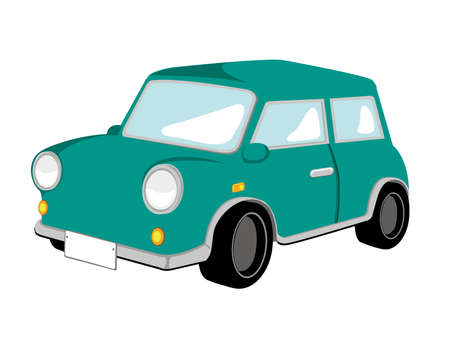Introduction to Driving Endorsements in the UK
For motorists across the United Kingdom, understanding driving endorsements is essential for maintaining a clean licence and safeguarding future driving prospects. A driving endorsement refers to an official record placed on a driver’s licence when they commit a motoring offence. These endorsements are rooted in UK law, governed primarily by the Road Traffic Offenders Act 1988, and are administered by the Driver and Vehicle Licensing Agency (DVLA). They serve as both a legal sanction and a deterrent, reflecting offences ranging from speeding to more serious violations such as drink driving. For every driver, knowing what these endorsements mean, how they affect insurance premiums, and their potential impact on employability is crucial. With the UKs strict approach to road safety and compliance, being well-informed about endorsements ensures drivers can make responsible choices and respond appropriately if they receive one.
2. The Structure of Endorsement Codes
Endorsement codes are a crucial aspect of the UK driving licence system, providing a concise method for recording and communicating driver offences. These alphanumeric codes are issued by the Driver and Vehicle Licensing Agency (DVLA) and are structured to indicate both the type and nature of an offence committed by a driver. Understanding how these codes are constructed helps drivers, employers, and insurance providers interpret penalty information accurately.
How Endorsement Codes Are Structured
Each endorsement code consists of a combination of letters and numbers. Typically, the letters refer to the category or group of offence, while the numbers specify the particular incident or variation within that category. This structure allows for a standardised approach across all regions in the UK.
Common Prefixes and Their Meanings
| Prefix | Offence Category |
|---|---|
| SP | Speeding Offences |
| DR | Drink or Drug Related Offences |
| IN | Insurance Offences |
| CD | Careless Driving Offences |
| CU | Construction & Use Offences (e.g., vehicle condition) |
| MS | Miscellaneous Offences (e.g., failure to comply with traffic signs) |
The Role of Numeric Suffixes
The numeric part following each prefix further defines the specific offence. For example, ‘SP30’ refers to exceeding the statutory speed limit on a public road, while ‘SP50’ relates to speeding on a motorway. This detailed categorisation helps clarify exactly what infraction took place.
Examples of Endorsement Code Assignments
| Code Example | Description | Penalty Points Range |
|---|---|---|
| SP30 | Exceeding statutory speed limit on a public road | 3-6 points |
| DR10 | Driving or attempting to drive with alcohol level above limit | 3-11 points |
| IN10 | Using a vehicle uninsured against third party risks | 6-8 points |
| CU80 | Breach of requirements as to control of vehicle (using mobile phone) | 6 points |
| CD10 | Careless driving without due care and attention | 3-9 points |
| MS90 | Failure to give information as to identity of driver etc. | 6 points |
This coding system ensures clarity and consistency when recording offences across the UK, making it easier for authorities and stakeholders to interpret a drivers record at a glance.
![]()
3. Categories of Driving Offences and Corresponding Endorsements
In the UK, driving endorsements are meticulously categorised based on the nature of the offence, each accompanied by a specific code that appears on your driving record. Understanding these categories is essential for drivers, as they directly influence insurance premiums, employability in certain sectors, and even one’s ability to retain a valid licence. Below is a breakdown of the most prevalent offence categories and their associated endorsement codes.
Speeding Offences
Speeding remains one of the most common traffic violations across Britain. The codes typically begin with ‘SP’. For example, SP30 denotes exceeding the statutory speed limit on a public road, while SP50 refers to speeding on a motorway. Penalty points for these offences generally range from 3 to 6 and can stay on your record for four years from the date of the offence.
Drink-Driving Offences
Drink-driving is treated with utmost seriousness in UK law, reflecting the significant risks it poses. Codes starting with ‘DR’ are allocated to these offences. DR10 is the most recognised, indicating driving or attempting to drive with alcohol levels above the legal limit. Penalties are severe—ranging from 3 to 11 points and potential disqualification from driving, with endorsements remaining on record for 11 years.
Insurance-Related Offences
Driving without valid insurance is another major offence, flagged under codes beginning with ‘IN’. IN10 is issued when someone is caught using a vehicle uninsured against third party risks. This endorsement brings between 6 to 8 penalty points and may significantly affect your ability to secure affordable car insurance in future.
Other Common Offence Categories
Beyond these core groups, other categories include careless driving (‘CD’), dangerous driving (‘DD’), and failing to provide driver identity information (‘MS’). Each comes with its own set of consequences, highlighting the importance of understanding precisely what an endorsement code signifies on your UK driving record.
The Importance of Knowing Your Codes
A working knowledge of these endorsement categories not only helps drivers avoid inadvertent violations but also empowers them to make informed decisions regarding insurance and employment opportunities. By staying informed about how each code correlates with specific behaviours behind the wheel, motorists can better navigate the complexities of UK road regulations.
4. Implications for UK Licence Holders
Understanding the broader impact of endorsements is crucial for any UK driver. Endorsements not only serve as a record of driving offences but also have significant consequences on a motorist’s legal standing, financial costs, and professional opportunities. Below, we examine how these factors play out in real-world scenarios.
Licence Status and Penalty Points
Each endorsement carries a specific number of penalty points, which remain on your driving record for a set period—usually between four to eleven years, depending on the offence. Accumulating twelve or more points within three years typically results in disqualification from driving (commonly known as a ‘totting up’ ban). For new drivers who have held their licence for less than two years, just six points are enough to trigger an automatic revocation.
| Endorsement Type | Points Range | Duration on Licence (years) |
|---|---|---|
| Speeding (SP) | 3-6 | 4 |
| Drink Driving (DR) | 3-11 | 11 |
| No Insurance (IN) | 6-8 | 4 |
| Caretless Driving (CD) | 3-9 | 4-11 |
Insurance Premiums and Financial Impact
The presence of endorsements invariably leads to higher insurance premiums. Insurers view drivers with endorsements as higher risk, often resulting in increased annual costs or even refusal to provide coverage. Some insurers will categorically decline applicants with serious convictions such as drink driving or driving without insurance.
Typical Insurance Premium Increases by Offence Type:
| Offence Code | Estimated Premium Increase (%) |
|---|---|
| SP30 (Speeding) | 10-25% |
| DR10 (Drink Driving) | 50-100%+ |
| IN10 (No Insurance) | 40-70% |
| CU80 (Mobile Phone Use) | 20-35% |
Employability Considerations in the UK Market
A clean driving record is often essential for roles that require vehicle operation, such as delivery drivers, taxi services, or logistics positions. Many employers conduct DVLA checks during recruitment and may reject candidates with recent or serious endorsements. In regulated industries—such as passenger transport—certain endorsements can result in immediate loss of professional licences or security clearances.
In summary, endorsements on a UK driving licence can ripple across multiple aspects of life—from personal mobility and financial costs to career prospects. Staying informed and maintaining a clean record remains the most effective way to safeguard your status both on and off the road.
5. Challenging and Removing Endorsements
For many UK drivers, receiving an endorsement can be a stressful experience, but it’s important to recognise that there are established procedures for challenging or removing endorsements from your driving record. Understanding these pathways not only helps you protect your driving status but also empowers you to take proactive steps towards rehabilitation.
Appeals Process: Your Right to Challenge
If you believe an endorsement has been incorrectly applied to your licence, the UK legal system provides a clear appeals process. Typically, you must appeal a conviction within 21 days of sentencing at the Magistrates’ Court where your case was heard. Consulting with a solicitor who specialises in motoring offences is highly recommended; they can help you present evidence or mitigating circumstances effectively. In some instances, errors in procedure or new evidence may lead to the removal of endorsements altogether.
Rehabilitation Periods Explained
Endorsements do not remain on your record indefinitely. The Rehabilitation of Offenders Act 1974 sets out specific periods after which most driving endorsements become ‘spent’ and are no longer required to be disclosed to employers or insurers. For example, most endorsements stay on your record for four years from the date of the offence, though more serious convictions—such as drink-driving—may last up to eleven years. Understanding these timeframes is crucial for managing your future prospects.
Proactive Steps for Removal or Mitigation
While waiting for an endorsement to expire naturally is one approach, there are additional steps drivers can take to mitigate their impact. Attending approved driver improvement courses may reduce the number of points added or demonstrate a commitment to safer driving practices—something courts may consider favourably in future proceedings. Keeping your insurance provider informed and seeking professional advice can also help minimise potential premium increases during the endorsement period.
Ultimately, while endorsements serve as a deterrent and marker of responsibility on UK roads, the system is designed with fairness in mind—offering opportunities for appeal, rehabilitation, and personal improvement. By staying informed and taking appropriate action, drivers can better navigate the complexities surrounding endorsements and safeguard their long-term mobility.
6. Staying Informed: Resources and Best Practices
Keeping up to date with the latest information on driving endorsements, codes, and regulations is vital for every UK driver. The landscape of motoring law can change, and being well-informed helps you avoid unnecessary penalties and ensures you stay on the right side of the law. Below, we outline trusted resources, smart record-keeping habits, and practical tips for maintaining a clean driving history.
Trusted Sources for Up-to-Date Information
The primary authority for all matters related to driving licences and endorsements in the UK is the GOV.UK website. Here, you will find comprehensive details about endorsement codes, penalty points, category definitions, and current legislation. The DVLA (Driver and Vehicle Licensing Agency) also provides official guidance and support for drivers needing clarification or assistance regarding their records. For those who wish to keep abreast of policy updates or changes in enforcement practices, subscribing to newsletters from reputable organisations such as the AA or RAC can be beneficial.
Regular Record Keeping
Proactive record keeping is a hallmark of responsible motoring. Check your driving licence record online regularly via the GOV.UK portal to ensure that all details are correct and that no unexpected endorsements have appeared on your file. It’s also wise to keep digital or physical copies of correspondence from authorities regarding fines, penalties, or any disputes resolved in your favour. This not only provides peace of mind but also serves as valuable evidence should there be any discrepancies in your record.
Practical Steps for a Clean Driving History
- Adhere strictly to speed limits, parking regulations, and other road rules.
- Avoid distractions behind the wheel—using hands-free devices responsibly if needed.
- Take advantage of educational courses offered after minor infractions; these can sometimes prevent endorsements from being added to your licence.
- If you drive professionally, consider regular refresher training to stay updated with best practices and legal changes.
Embracing a Proactive Approach
Ultimately, maintaining a clean driving history isn’t just about avoiding penalties—it’s about protecting your personal reputation and financial well-being. Insurers often reward drivers with clean records through lower premiums, while employers look favourably upon candidates free from recent endorsements. By leveraging reputable resources, practising diligent record keeping, and adopting safe driving habits, you position yourself for long-term success on Britain’s roads.


